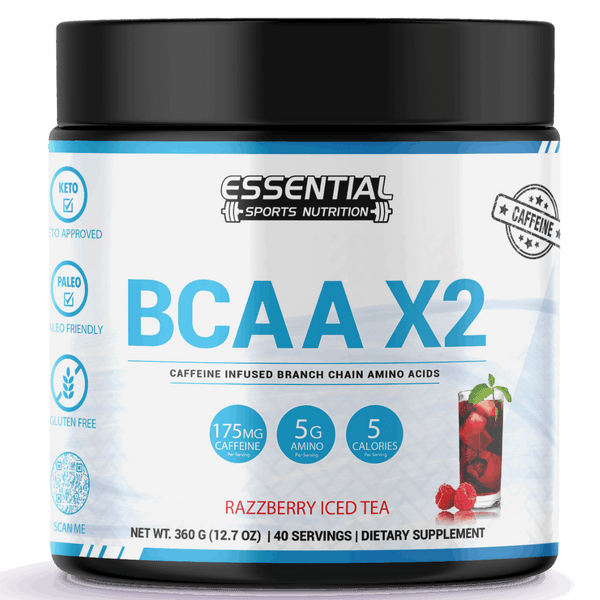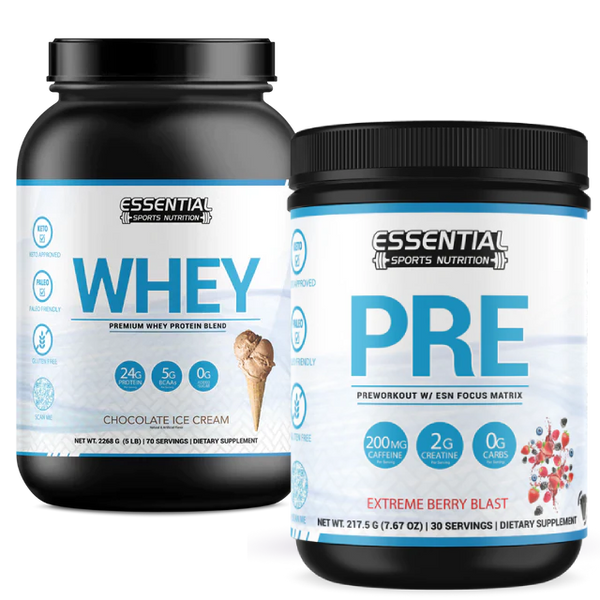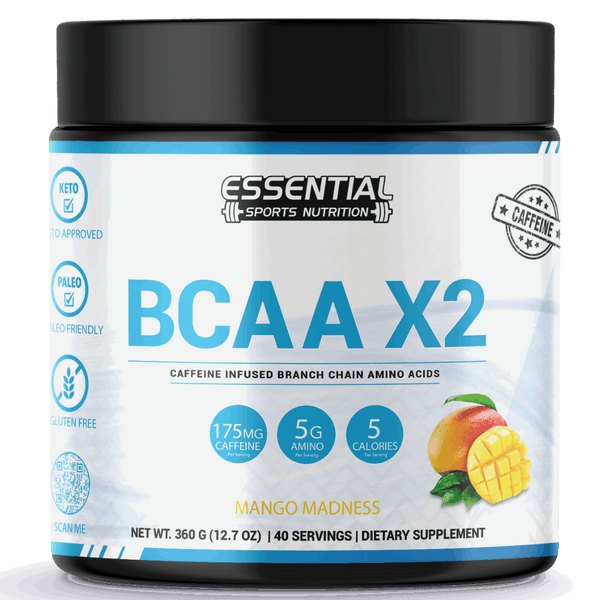Differences Between Paleo and Keto Diets: Which is Right for You?
You're eyeing Paleo and Keto, wondering which might suit you best. Paleo draws on ancestral eating, prioritizing whole, unprocessed foods and a broad spectrum of fruits and natural sweeteners while steering clear of dairy and grains. Keto, a high-fat, low-carb plan forged for medical purposes, pushes your body into ketosis for weight loss. It allows certain dairy and artificial sweeteners but is strict on fruit and starchy veggies. Both aim for improved health, yet they operate on different principles. Understanding their unique approaches can guide your choice, aligning with your health goals and preferences. The decision involves weighing their benefits and challenges.

Key Takeaways
-
Paleo diet focuses on whole, unprocessed foods, while Keto targets high-fat, low-carb intake for ketosis.
-
Keto diet allows dairy and artificial sweeteners, unlike Paleo which excludes dairy and prefers natural sweeteners.
-
Paleo emphasizes a healthy lifestyle and food flexibility, whereas Keto concentrates on macronutrient management for health conditions.
-
Both diets can promote weight loss, but Keto often results in quicker results due to ketosis.
-
Paleo allows a wider variety of fruits and vegetables, whereas Keto significantly limits these, especially starchy ones.
Understanding Paleo Diet Plan
The Paleo diet, rooted in the eating habits of our early ancestors, focuses on consuming natural, unprocessed foods to enhance overall health and well-being. By harking back to a time before agriculture revolutionized our food supply, this diet encourages a return to the basics: meats, fish, eggs, nuts, fruits, and select fats. It's a lifestyle that not only revolves around what you eat but also how you live, emphasizing wellness practices that include specific exercises and mindfulness.
You'll find that grains, legumes, processed sugar, and most dairy products are off the menu. This isn't just about cutting calories or losing weight; it's about feeding your body the nutrient-rich foods it was originally designed to consume. Unlike diets that focus strictly on macronutrient ratios, the Paleo diet allows for whole-food carbs like fruits and even some unrefined sweeteners, aiming for a holistic balance that supports overall health rather than just weight loss.
Incorporating the Paleo diet into your life means more than adjusting your grocery list; it's about adopting a holistic approach to wellness. It's a commitment to natural foods and practices that collectively enhance your physical and mental well-being.
Exploring Keto Diet Plan

Delving into the keto diet reveals a high-fat, low-carb regimen originally developed to treat pediatric epilepsy, now popular for its weight loss benefits. The ketogenic diet, or Keto for short, operates on a simple principle: by severely limiting carbohydrates, your body is forced to burn stored fats for energy, a state known as ketosis. This metabolic switch not only aids in weight loss but has also been found effective for individuals battling obesity and celiac disease, offering a dietary approach that limits gluten intake naturally.
The keto diet isn't one-size-fits-all; it includes four subcategories: the Standard Ketogenic Diet (SKD), Cyclical Ketogenic Diet (CKD), Targeted Ketogenic Diet (TKD), and a high-protein variant. Each caters to different lifestyle needs while maintaining the core high-fat, low-carb ethos.
Navigating the keto diet means knowing which foods to embrace and which to avoid. Foods to include are meats, fatty fish, eggs, unprocessed cheeses, nuts, seeds, healthy oils, and low-carb vegetables. On the flip side, high-sugar products, grains, most fruits, beans, root vegetables, and highly processed foods are to be avoided, ensuring you stay within the metabolic state of ketosis for best results.
Key Differences Between Paleo and Keto Diets Highlighted
After exploring the fundamentals of the keto diet, let's compare it with the paleo diet to underline the key distinctions between these two popular nutritional approaches. Inspired by early human eating habits, the Paleo diet emphasizes whole foods such as meat, fish, fruits, and vegetables. In contrast, the Keto diet focuses on achieving ketosis through a regimen of high fat, moderate protein, and very low carb intake. One of the key differences lies in their approach to macronutrient ratios; while Keto meticulously manages these ratios to induce ketosis, paleo doesn't stress specific macronutrient distributions, offering more food flexibility.
Another notable distinction is in lifestyle choices; the paleo diet incorporates specific lifestyle choices beyond just diet, advocating for an overall healthy way of living. Meanwhile, Keto is often used for targeting specific health conditions, requiring careful monitoring of saturated fat intake. Additionally, while the paleo diet allows the consumption of whole-food carbs from fruits and veggies, the keto diet permits dairy and some soy products but restricts higher-carb items like ice cream and milk. Understanding these key differences can help you make informed lifestyle choices that align with your health goals and preferences.
Health Benefits Compared

When comparing the health benefits of the Paleo and Keto diets, it's important to contemplate how each approach impacts your body's overall well-being and specific health markers. Both diets emphasize the importance of whole, unprocessed foods, which can lead to significant health benefits. However, they also come with their own unique set of advantages and potential concerns, especially when it comes to weight loss, cardiovascular health, and blood sugar regulation.
| Aspect | Paleo Diet | Keto Diet |
|---|---|---|
| Weight Loss | Promotes significant weight loss through whole foods | Achieves weight loss by inducing ketosis |
| Cardiovascular Health | Can improve due to focus on unprocessed foods | May improve, but high fat intake concerns some experts |
| Blood Sugar Regulation | Enhanced by reducing processed carbs | Highly effective due to very low carb intake |
| Nutrient Deficiencies | Risk due to the exclusion of grains and legumes | Risk due to limited fruit and vegetable intake |
| High Meat Intake | Potential risks like cardiovascular disease | Moderated by a focus on fats, but still a consideration |
Both diets offer robust health benefits, but it's important to consider your personal health goals and dietary preferences before deciding.
Potential Side Effects of Paleo and Keto Diets

While both the Paleo and Keto diets boast numerous health benefits, it's important to be aware of the potential side effects they may bring. On the Keto side, you might encounter keto breath, a somewhat unpleasant side effect stemming from increased ketone production. Unlike Paleo, Keto can also lead to the keto flu or a skin rash as your body adjusts to its new fuel source. Both diets, however, aren't free from digestive issues; you might experience constipation or diarrhea as your body adapts to the high fat intake of Keto or the whole foods focus of Paleo.
To counteract these side effects, you might need to contemplate nutritional supplements. They can help prevent deficiencies that could worsen these unwanted effects. It's vital, though, not to go at it alone. Consulting with a healthcare provider before starting either diet, especially if you have existing health conditions, is wise. They can guide you on navigating potential side effects and ensure your diet aligns with your health goals.
Weight Loss Outcomes

Regarding weight loss, both the Paleo and Keto diets have been shown to effectively shed pounds in the short term, though your results may vary based on personal adherence and metabolic differences. The Keto diet, with its high-fat, low-carb approach, pushes your body into ketosis, using fat as a primary energy source, which can lead to rapid weight loss. On the other hand, the Paleo diet focuses on whole, unprocessed foods, which can naturally reduce your calorie intake and improve nutrient density, supporting gradual weight loss.
Here's a simple comparison to help visualize their differences:
| Factor | Paleo Diet | Keto Diet |
|---|---|---|
| Main Approach | Whole foods | High-fat, low-carb |
| Weight Loss | Gradual | Rapid |
| Energy Source | Balanced macronutrients | Ketosis |
Both diets offer paths to weight loss, but the journey may look different depending on which you choose. The Paleo diet's emphasis on nutrient-dense foods can lead to a more sustainable, slower weight loss, while the Keto diet's focus on entering ketosis can result in quicker results. Remember, the best diet for you depends on your personal health goals, dietary preferences, and how well you can stick with it over time.
Food Choices and Restrictions

Exploring the food choices and restrictions, it's essential to understand that your dietary freedoms and limitations will significantly differ between the Paleo and Keto diets. The Paleo diet allows you to enjoy a wide variety of fruits, embracing the natural sweetness they offer. Conversely, the Keto diet restricts your fruit intake to low-sugar options like berries to maintain ketosis. When it comes to sweeteners, the Keto diet opens the door to some artificial sweeteners, whereas the Paleo diet encourages the use of natural sweeteners such as honey and maple syrup.
Dairy is another point of divergence; the Paleo diet excludes all dairy products, adhering to Paleolithic principles, while the Keto diet welcomes high-fat, high-protein dairy options. Starchy vegetables, enjoyed in moderation on Paleo are significantly limited on Keto to keep the body in ketosis. When considering meats, the Paleo diet prioritizes natural, grass-fed options, steering clear of processed meats, in contrast to the Keto diet, which allows processed meats as long as they don't contain added sugars or carbs. This overview highlights the distinct food choices and restrictions unique to each diet, guiding you in making an informed decision based on your health goals and dietary preferences.
Navigating Challenges

After understanding the food choices and restrictions of both the Paleo and Keto diets, addressing the challenges you may face when adopting these nutritional plans is crucial. The Paleo diet focuses on whole foods and excludes grains and dairy, while the Keto diet focuses on high-fat, low-carbohydrate foods to induce ketosis. Both diets have strict food restrictions that can lead to nutrient deficiencies if not carefully managed. It's vital to be aware of these potential pitfalls and consider a more balanced approach to avoid adverse effects on your health.
Consulting with a healthcare professional before starting either diet is wise to ensure it aligns with your individual health needs and to understand potential side effects. They can offer guidance on achieving a balanced diet within these frameworks and mitigating health considerations like vitamin or mineral deficiencies.
Combining elements from both diets might provide a more sustainable and less restrictive path, contributing to long-term success. Remember, the key to any dietary change is not just short-term gains but ensuring it's a healthy, viable option for your lifestyle and health goals in the long run.
Making the Right Choice
Considering your unique health goals and dietary preferences, how do you decide between the Paleo and the Keto diet? Both keto and paleo diets prioritize natural whole foods but have distinct approaches to achieving wellness and weight management. Here's a guide to making the right choice:
-
Consider Your Health Goals: The Paleo diet focuses on consuming natural, whole foods to support overall health, offering more food flexibility with a wider variety of fruits, vegetables, and nuts. Meanwhile, the Keto diet aims for ketosis through a high-fat, low-carb intake, which may be beneficial for rapid weight loss or managing certain health conditions.
-
Consult with a Healthcare Provider: It is crucial to seek professional guidance to determine which diet best aligns with your health needs and preferences. This step can help you understand the impact of carb intake, macronutrient ratios, and how each diet may affect your body.
-
Evaluate Long-term Sustainability: Consider which lifestyle choices you can maintain over time. Paleo may offer greater long-term sustainability due to its focus on food quality and flexibility, whereas Keto requires strict adherence to maintain ketosis and may be challenging for some to follow indefinitely.
Choosing between keto and paleo diets ultimately depends on your personal health goals, dietary preferences, and which regimen you can realistically adhere to for the long haul.
Conclusion

So, what's the best fit for you, paleo or Keto? Both diets have their perks, offering unique weight loss and health benefits. Yet, they're not without their challenges and side effects. You can navigate these waters by weighing the evidence, considering your lifestyle, and perhaps consulting a healthcare provider. Remember, the right choice isn't about the perfect diet but what's sustainable and beneficial for you in the long run. Your health journey is personal.
Differences Between Keto and Paleo Diets FAQs
Q: What is the difference between the paleo diet and the keto diet?
A: The paleo diet focuses on eating whole, unprocessed foods that our ancestors would have eaten, while the keto diet is a low-carb, high-fat diet that aims to put the body into a state of ketosis.
Q: How do paleo and keto diets differ in terms of food groups?
A: The paleo diet may include all food groups except dairy, grains, and processed foods, while the keto diet restricts carbohydrates and focuses on consuming fats and moderate amounts of protein.
Q: What are the benefits of the paleo diet compared to the keto diet?
A: The paleo diet emphasizes whole foods and may be easier to follow for some individuals. In contrast, the keto diet focuses on achieving ketosis for weight loss and other health benefits.
Q: Are there any similarities between the paleo and ketogenic diets?
A: Both diets share the principle of avoiding processed foods and refined sugars, although they differ in their macronutrient compositions.
Q: Can you simultaneously follow the paleo and keto diets?
A: It is possible to combine elements of both diets, but it can be challenging as they have different restrictions and goals.
Q: Which diet, Keto or paleo, is more suitable for individuals with type 2 diabetes?
A: The keto diet may be more beneficial for individuals with type 2 diabetes due to its focus on low-carbohydrate intake, which can help regulate blood sugar levels.
Q: Is Keto Healthier Than Paleo?
A: You're asking if one dietary approach is healthier than another. It really depends on your personal health goals and conditions. Both have their benefits, but it's crucial to consider your own needs and preferences.
Q: What Are 3 Disadvantages of the Paleo Diet?
A: Like traversing a jungle without a map, the Paleo diet's high costs, potential nutrient deficiencies from skipping grains and legumes, and health risks from increased red meat intake present real challenges you'll face.
Q: Can You Lose Weight on Paleo?
A: Yes, you can lose weight on the Paleo diet. It emphasizes whole foods and eliminates grains and added sugars, which can help reduce calorie intake and increase satiety, leading to potential weight loss.
Q: Why Is Corn Not Paleo?
A: Corn is not Paleo because it is a grain that is high in carbohydrates, leading to blood sugar spikes. It's lectins and phytic acid may cause digestive issues, and it's often genetically modified, not fitting the whole-foods focus.




























